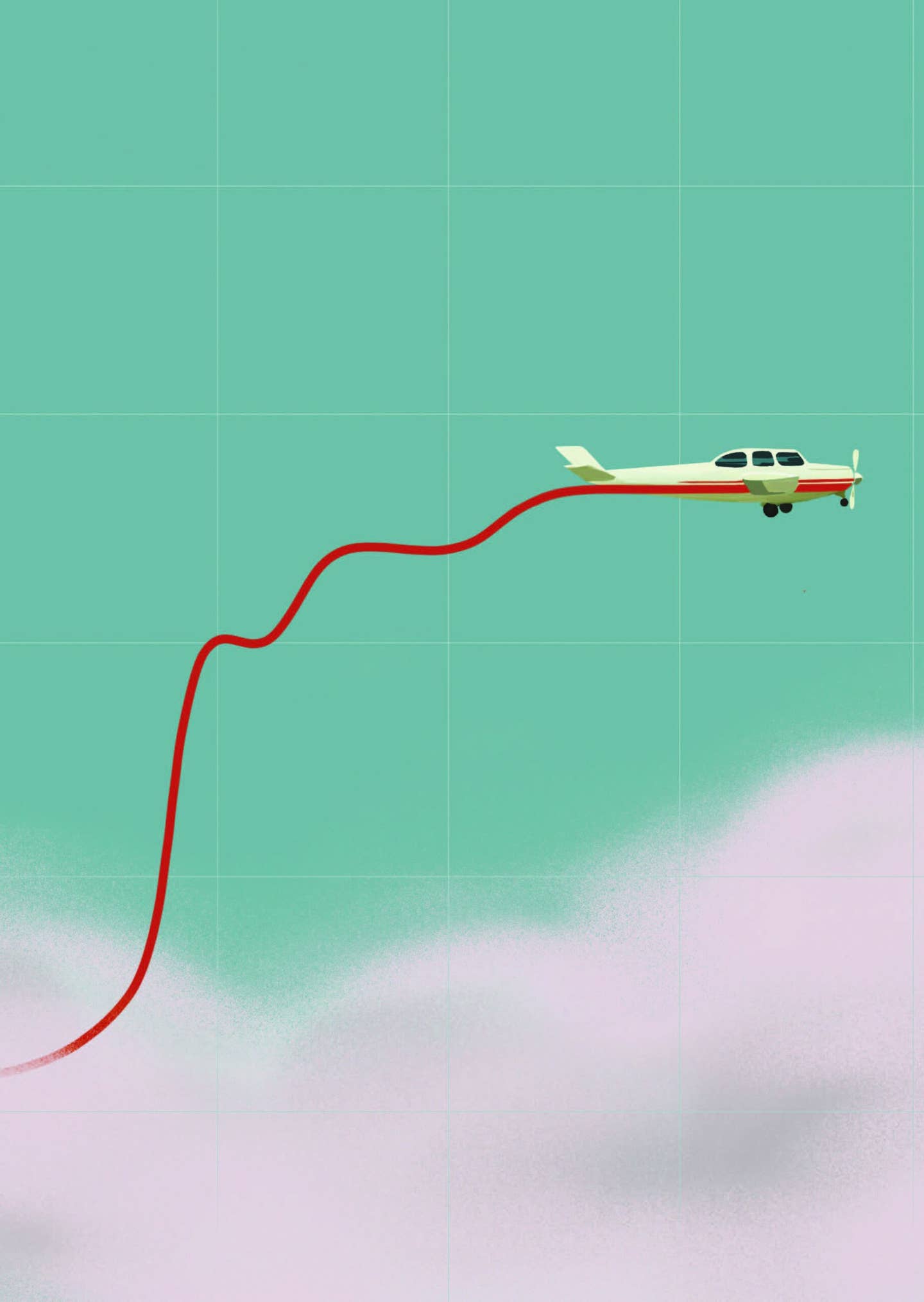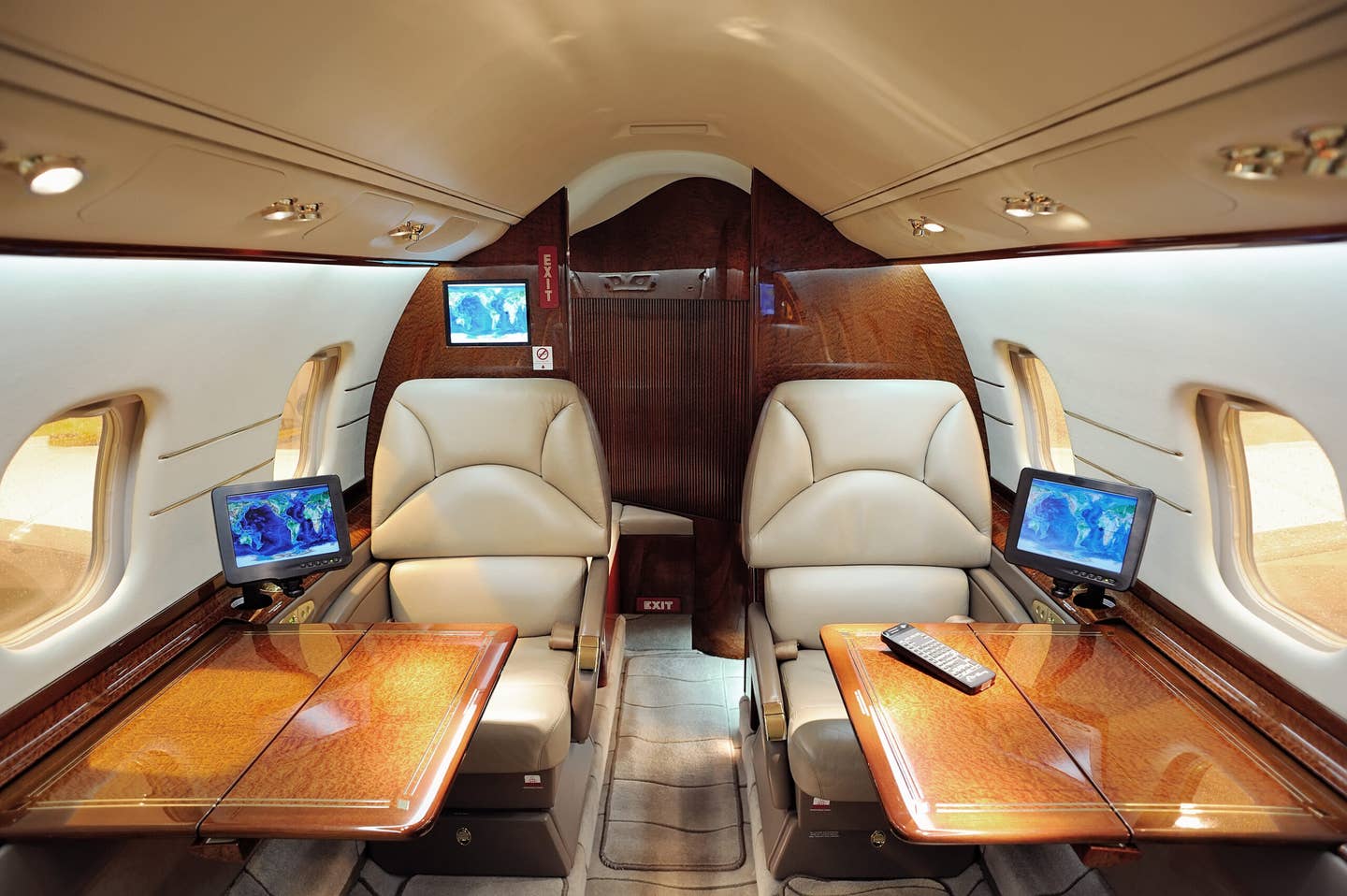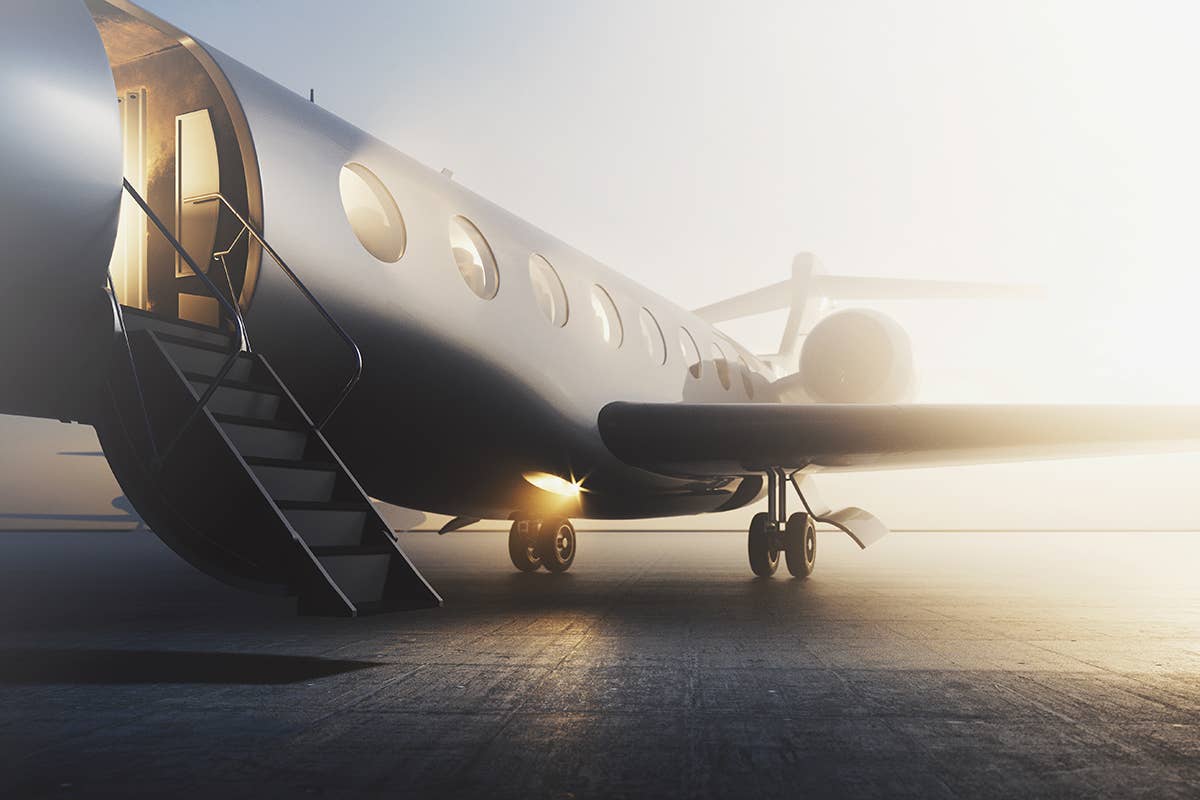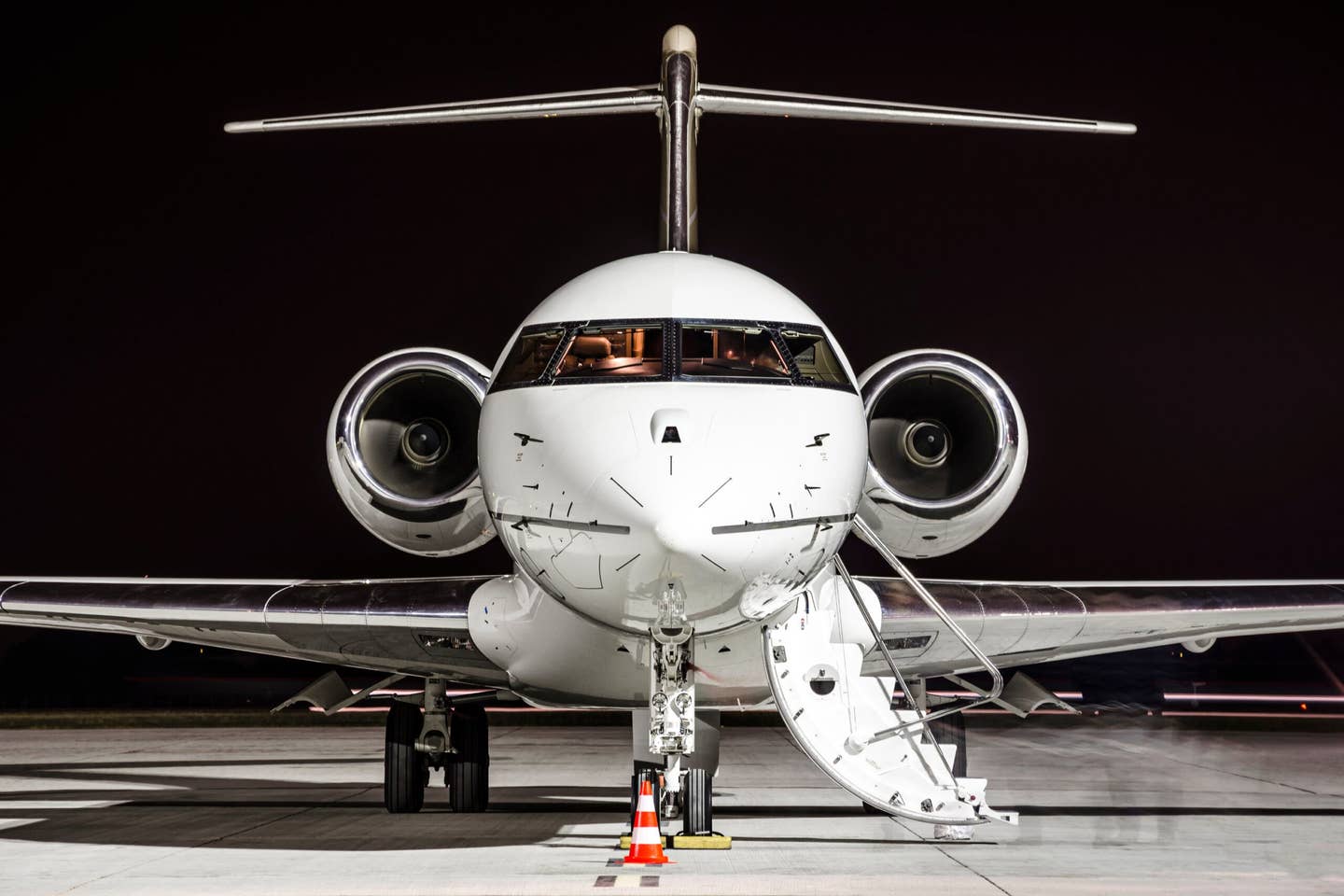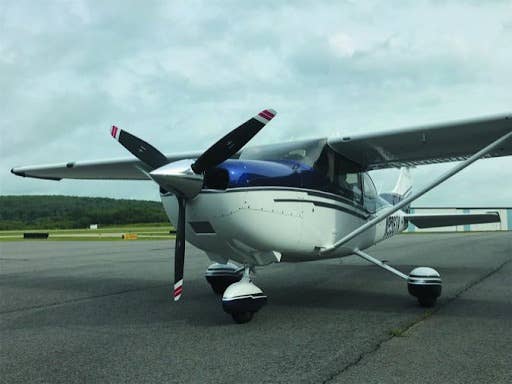
Four-seater airplanes, like this Cessna 182, are the most popular segment for private buyers, especially in the used market. [The Aviation Consumer file photo]
BROUGHT TO YOU BY FLYING FINANCE
When it comes to general aviation, four-seat airplanes are far and away the most popular segment for private buyers. Four-seaters are generally the go-to class for entry-level owners because of cost, flexibility, and ease of use, especially when it comes to recreational aviation.
Of course, this category covers a wide range of aircraft, with various numbers and types of engines and even different wing configurations. Depending on what you want to spend, you can find luxury features or more bare-bones aircraft, but four-seaters still generally fall into the same set of use cases.
Our colleagues at The Aviation Consumer have thoroughly reviewed this popular segment, so we compiled this list based on some of their top-five favorite models to look for when buying used.
The Cessna 182 Skylane is a known quantity and a historied line of planes. Introduced in 1956, the Skylane is a reliable and versatile aircraft that evolved from the Cessna 180 taildragger. For this iteration, Cessna added tricycle landing gear, making it handle better on paved runways but also giving it a nose-heavy tendency that persists to this day.
Depending on what generation you’re looking at, you’ll find that Skylanes have been continually upgraded over the course of their decades of production. Cessna added cowl flaps, swept tails, electric flaps, wider fuselages, and eventually a full Garmin G1000 glass cockpit.
The Skylane was originally equipped with a 230 hp Continental O-470 engine, which is known for reliability. Later models transitioned to the 230 hp Lycoming IO-540 engine for improved fuel injection and reduced carburetor icing risks. Both engines have their pros and cons, so be sure you have a thorough pre-purchase inspection (PPI) completed before buying (the same goes for any model on this list).
Cruise speed for most Skylanes are approximately 130-140 knots. Turbocharged models can reach mid-160s in the flight levels.
With tanks that go up to 88 gallons, Skylanes provide excellent range and endurance of about 900 miles. Modern models can handle up to 3,100 pounds, respectable payload capacity for the four-seater segment.
The Skylane is also known for its capability to handle short and rough fields with a takeoff distance of about 1,115 feet over a 50-foot obstacle.
Newer Cessna 182 Skylanes equipped with the Garmin G1000 panel are priced north of $600,000. Used models offer a range of options, with mid-2000s versions available for under $500,000.
The Cessna Skylane is a practical family aircraft prized for its hauling capacity, stability, and ease of maintenance. However, it’s not a speedster and requires attentive trimming to avoid hard landings that could damage the nose gear. Despite a few known quirks, such as fuel tank siphoning issues and a forward center-of-gravity tendency, its robust build and ease of operation make it a top choice for long-term ownership.
The Cirrus SR22T G6 is the latest generation of Cirrus Aircraft’s popular high-performance piston single, with a price nearing $900,000 when fully equipped.
The “T” in this case refers to “turbocharged,” and naturally-aspirated SR22s can be found for considerably less. The SR22T G6 is our choice for this list, though, with impressive technology and creature comforts.
A key upgrade for the sixth generation is the Garmin G1000 NXi-based Perspective+ flight deck, featuring larger displays, faster processor, and redesigned control system with a QWERTY keyboard. The system simplifies weight-and-balance calculations and offers hypoxia protection, a yaw damper that engages automatically above 200 feet, and advanced synthetic vision. The 315 hp Continental twin-turbocharged engine allows the SR22T to reach altitudes of 25,000 feet, with a useful load of 1,248 pounds.
The SR22T is certified for flight into known icing with a TKS anti-icing system and features new Spectra LED lighting for enhanced visibility. Inside, Bluetooth connectivity, multiple USB ports, and options like Garmin Flight Stream 510 enable wireless control of flight plans and in-flight entertainment. Some models were also optioned with Cirrus Global Connect for satellite messaging.
Cirrus made comfort a priority, with an automotive-inspired interior, leather seating, multiple storage pockets, and modern environmental controls. The 60/40 split rear seating and strategic cabin lighting were built with passengers in mind.
Where Cirrus really excels is in customer service. The Cirrus Vision Center in Knoxville, Tennessee, is a stunning facility and known for treating customers like royalty.
If you take the company at its word, Cirrus says that around 40 percent of buyers upgrade from older Cirrus models specifically because of good customer experiences.
The Diamond DA40 Star’s popularity surprised the aviation world despite its unconventional design. Originating from Austria’s Hoffmann Flugzeugbau, which specialized in gliders, the DA40 combines European design with features that appeal to American pilots.
Diamond Aircraft began in 1981 as a glider manufacturer before transitioning to GA aircraft. The DA40 was introduced in 1997 and certified in 2000 with a Lycoming IO-360 engine, which provided the power it needed. Since its release, the DA40 has been a popular choice for flight schools and private owners for its fuel efficiency and performance.
The DA40’s construction relies on lightweight composite materials. Its wraparound canopy offers excellent visibility but can cause the cockpit to overheat in warmer weather. The aircraft is equipped with center sticks, Garmin G1000 avionics suite, and push-pull rods for flight control. It also features a spring steel landing gear and castoring nosewheel, requiring differential braking for steering.
Performance-wise, the DA40 cruises at 135 to 140 knots, burns about 9.5 gallons per hour, and offers exceptional short-field capability with a takeoff distance of 1,200 feet. However, its payload capacity makes it more of a three-person airplane with luggage when carrying full fuel. Later models, such as the DA40XL and DA40XLS, introduced luxury interiors, higher gross weights, and improved performance.
Maintenance of the DA40 has been reliable, with few issues reported, mainly related to early Garmin G1000 bugs and weak landing lights. Overall, the DA40 is praised for its excellent handling, sailplane-like design, and stick controls, making it one of the most fun four-seaters to fly.
The Mooney Ovation 2 GX blends traditional, fan-favorite Mooney design with modern upgrades. Known for its speed, the Ovation series began in 1994, using a derated 280-HP Continental IO-550-G engine that delivered a 190-knot cruise speed.
Mooney’s reputation for aerodynamic efficiency hit a ceiling with earlier models, so it opted for larger displacement engines to enhance performance—a move that was controversial at the time but has since been pretty well regarded by the community.
Mooney’s history is one of innovation and resilience. The M20 series dates back to the 1960s with a semimonocoque rear fuselage and pushrod-driven controls. Though early models faced structural failures, later designs became renowned for their durability and efficiency.
If you’re looking used, the Ovation 2 GX’s cockpit and cabin received significant upgrades in the early 2000s compared to older Mooneys. Later Ovation generations feature composite interior panels, better soundproofing, and more comfortable seating, especially in the rear.
Standard avionics included Garmin G1000 glass panels from 2006 onward, with optional equipment like air conditioning and TKS deicing systems.
Maintenance is generally straightforward, with a relatively reliable airframe and engine. Common issues include occasional avionics failures and compliance with several Airworthiness Directives (ADs) addressing exhaust cracks, pitch trim system inspections, and engine mount hardware. Despite production ceasing in 2010, parts availability remains good, supported by the Mooney factory.
Operating costs are typical for high-performance singles. Annual inspections or insurance are on par with similar aircraft, meaning it will set you back a bit more than some of the lower-end planes on this list. Still, the Ovation 2 GX stands out as a well-rounded, long-range cruiser with a dedicated community of satisfied owners.
The Piper Arrow, a 200 hp normally-aspirated aircraft, is regarded as a sensible choice among pilots for its reliability and cost-effective operation. Since the Arrow is a retractable-gear version of the Piper Cherokee, it’s a logical step-up aircraft for pilots familiar with Piper’s fixed-gear models. The Arrow’s reputation for being a competent and forgiving plane makes it an exceptionally popular choice for flight schools as a complex trainer.
Introduced in 1967, the original PA-28R-180 featured a 180 hp Lycoming engine and retractable gear with an automatic extension system. By 1969, Piper upgraded to a 200 hp version. The Arrow II debuted in 1972 with a stretched fuselage and improved load capacity. Later, the Arrow III introduced a semitapered wing and increased fuel capacity, while the controversial T-tailed Arrow IV faced criticism for its handling quirks.
While the Arrow isn’t as fast or efficient as some competitors on this list, it boasts a roomy interior, solid load capacity, and predictable handling. The turbocharged version offers impressive speed at altitude (but it also demands careful engine management to avoid overboost and reliability issues).
The Arrow’s landing gear system, originally praised for its safety, later raised concerns due to unintended gear extension. Piper addressed the issue by offering deactivation kits, though many pilots still prefer the original system. For any used examples, make sure to ask about the landing gear’s status and history.
Today’s Piper Arrow remains a respected choice for personal and training use. Its balance of performance, comfort, and affordability makes it a mainstay in the world of light aircraft.
If you’re looking to finance an aircraft, FLYING Finance can help you lock in a fixed-rate loan now while rates are low. Our team provides flexible financing options tailored for aviation, and we can help walk you through every step of the process.
Reach out today so you don’t miss out on the best rates.
Gear to Buy When Purchasing a Plane

Sign-up for newsletters & special offers!
Get the latest FLYING stories & special offers delivered directly to your inbox

